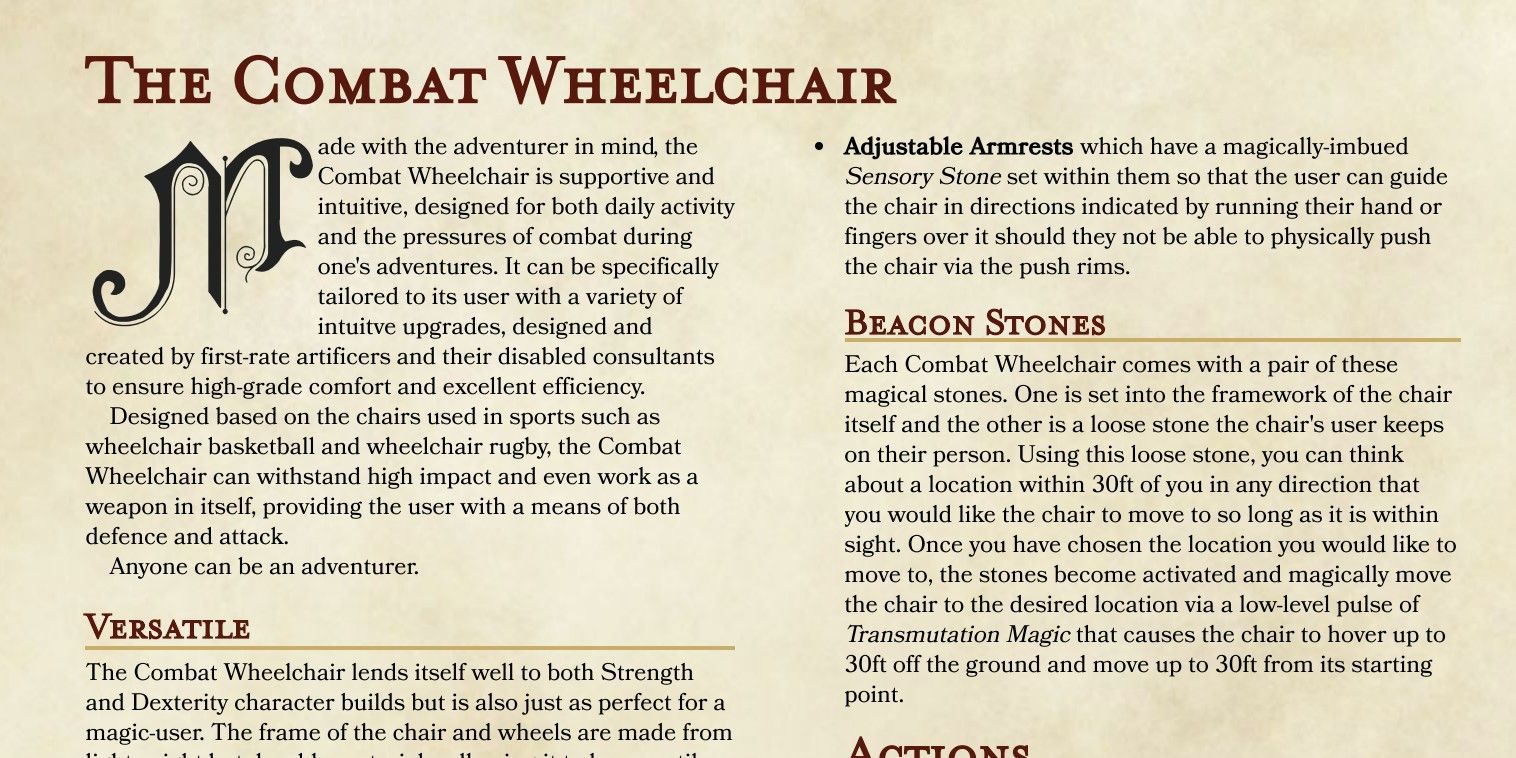Freelance game designer Sara Thompson has released a rule-set for a Combat Wheelchair for Dungeons & Dragons Fifth Edition. The wheelchair is designed to help make adventuring accessible to players and characters with disabilities, increasing inclusivity in a game that has frequently been accused of lacking diversity.
Thompson's Combat Wheelchair allows characters to move across almost any terrain, enabling adventures in many different environments that may have previously been inaccessible to some adventurers. Characters can attack from the Combat Wheelchair using any weapon or magic, but the chair itself can also serve as a weapon.
At first, some of the proposed attacks may seem repetitive, with both "Ram" and "Tyre Strike" allowing the character to deal 1d6 of bludgeoning damage on a successful hit. However, when "Ram" is coupled with the "Swift" feature, applicable when the character is moving downhill, players instead role 1d8 and gain a chance of knocking their opponent prone. These intricacies work to make the Combat Wheelchair not only an effective and interesting in-game tool, but also a good reflection of the real-life workings of an actual wheelchair.
The verisimilitude of her Combat Wheelchair likely stems from the design efforts Thompson put into it. Basing the mechanics and movements on basketball and rugby wheelchairs, Thompson worked to ensure that the in-game mechanics would be balanced while opening up as many different environments as possible for characters in wheelchairs.
Perhaps the only point of contention with Thompson's Combat Wheelchair design is its price. Item costs are normally not set by Wizards of the Coast, who instead allow Dungeon Masters to set their own prices for their own worlds. Thompson, however, suggests a price of 20 gold pieces -- substantially more than the five gold standard wheelchair due to the significantly increased functionality. While four times the cost may sound pricey, it's nothing compared to the costs of wheelchairs in the real world, especially ones with such enhancements.
In keeping with undervaluing necessary tools, Thompson has made her Combat Wheelchair rule-set available for free, stating that there should be no charge for "something that should have been in the base games to begin with." Not only is it free, but Thompson has provided multiple versions of her design, including audio and dyslexic-friendly versions, in addition one with the familiar D&D formatting. These steps help ensure that the Combat Wheelchair is increasing accessibility in-game and in the real world.
With accessibility features and representation of disability becoming an important and expected part of gaming at large, Thompson's Combat Wheelchair does some of this important work for D&D. It makes possible for characters with disabilities to go on the same epic adventures as everyone else, allowing players who use wheelchairs to create characters that represent them. This is a step in the right direction, but there's still a long road ahead. With the help of creators like Thompson, hopefully the path will be a little easier to travel.


